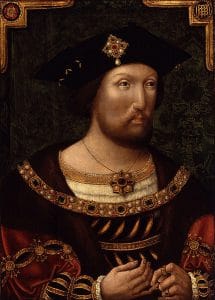 On this day in history, 2nd March 1522, in Henry VIII’s reign, the annual Shrovetide joust took place.
On this day in history, 2nd March 1522, in Henry VIII’s reign, the annual Shrovetide joust took place.
Chronicler Edward Hall gives a very detailed account of the knights’ costumes, trappings and the mottoes embroidered on them. King Henry VIII’s motto was “elle mon coeur a navera”, or “she has wounded my heart”.
In my latest “on this day in Tudor history” video, I share Hall’s account of this lavish spectacle and the theme of the entertainment, which has been taken by some to be evidence of the start of Henry VIII’s affair with Mary Boleyn.
If you’re interested in finding out more about Mary Boleyn and her relationship with King Henry VIII, you can see my video at https://youtu.be/Z6ChItwXANw.